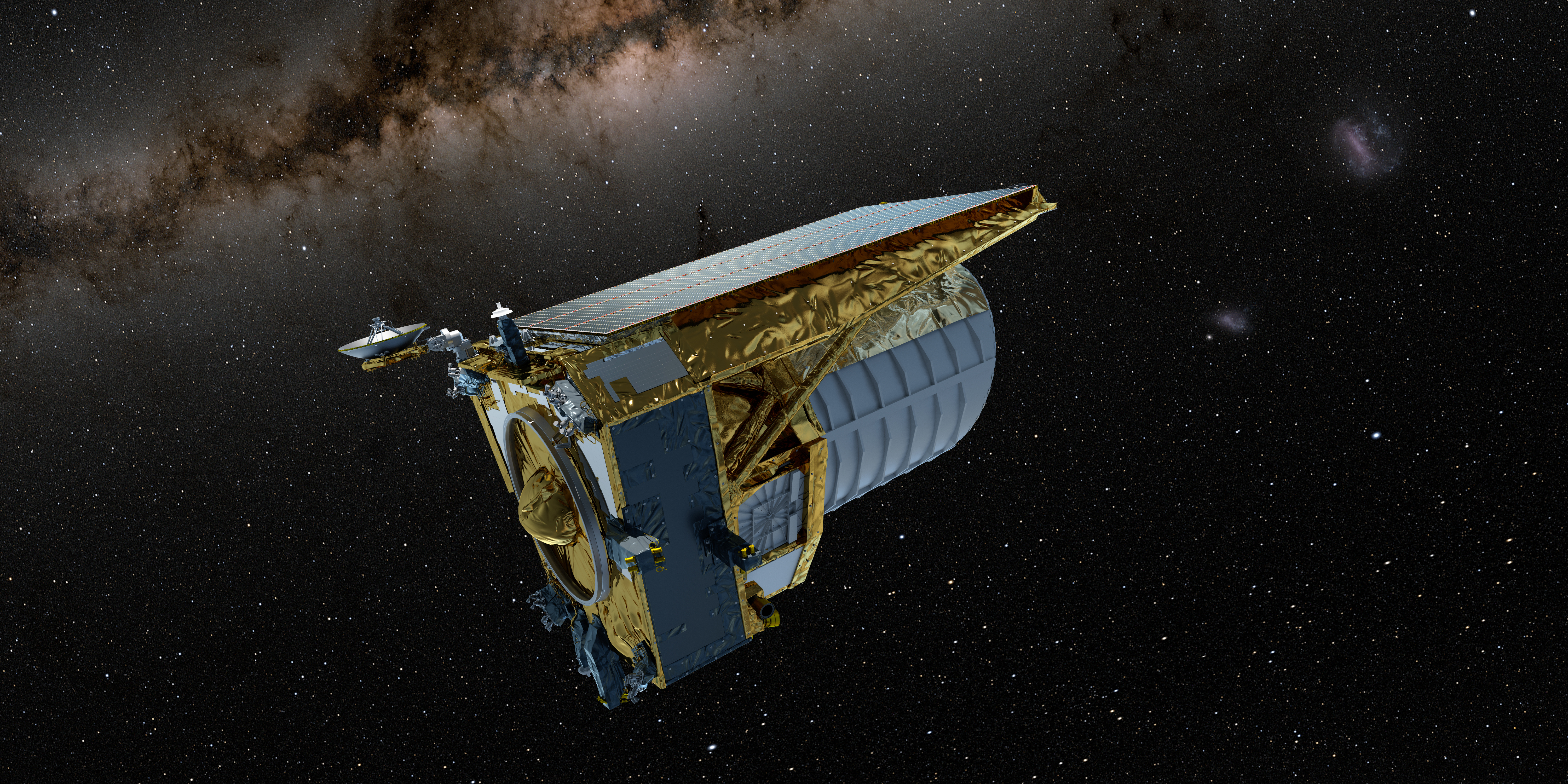

ESA's Euclid mission is designed to explore the composition and evolution of the dark Universe. The space telescope will create a great map of the large-scale structure of the Universe across space and time by observing billions of galaxies out to 10 billion light-years, across more than a third of the sky. Euclid will explore how the Universe has expanded and how structure has formed over cosmic history, revealing more about the role of gravity and the nature of dark energy and dark matter.
Euclid's primary goals are to study two key properties of the Universe: the historical evolution of its expansion and its dark matter. Euclid does this by taking images of very distant galaxies - these galaxies are typically billions of light years away, so the images show us galaxies as they existed billions of years ago. By comparing many images of galaxies with different distances we can learn about how the Universe has been changing over the course of its history.
There is a slight catch to this though - the images Euclid makes are not faithful depictions of the galaxies. This is not because the telescope isn't working, quite the contrary! It is because the light from these distant galaxies has been distorted by the gravitational pull of all the intervening matter between the galaxy and the telescope. This phenomenon is called gravitational lensing. We can't see this intervening matter because about 85% of it is invisible dark matter. Far from being an impediment to doing science with Euclid's images, gravitational lensing can actually be used to learn about the dark matter doing the lensing. Distortions in galaxy images are analysed statistically to isolate the lensing signal. This is the first of Euclid's core scientific objectives - to measure gravitational lensing, make maps of dark matter, and then use those maps to learn about the physics of the Universe.
The second core objective is to measure the clustering of galaxies. Galaxies are not randomly dotted about the sky - they tend to clump together because of the action of gravity. The precise pattern of this clumping can tell us in rich detail about the physics of gravity, the interplay of galaxies with dark matter, and the state of the Universe just after the Big Bang when all the structure we see today was seeded. Euclid will measure the clustering of galaxies to give fundamental insights into our Universe.
With both these measurements made across a huge swathe of the sky and out to vast distances, Euclid will be able to trace out the expansion history of the Universe. The key aim here is to learn about dark energy, a mysterious force that seems to be responsible for pushing galaxies away from each other, the opposite effect to gravity. Very little is known about dark energy - Euclid has been designed to make game-changing breakthroughs in the study of this substance, which could entail a complete overhaul of the Standard Model of Physics.
Click here to learn more about Euclid's core science.
As well as breakthroughs in the fundamental physics of the Universe, data from Euclid will provide a lasting legacy impacting almost all areas of astronomy. Being taken from space and hence free from distortions imparted by Earth's atmosphere, Euclid's images will be of exceptionally high resolution. The telescope's wide field of view will allow a third of the sky to be viewed during the 6-year mission, and the high sensitivity of the VIS and NISP detectors, collecting optical and near-infrared light respectively, will give us a unique view out into space.
Studies of very distant galaxies, super-massive black holes, exploding stars, nearby stars and galaxies influencing our own Milky Way galaxy, undiscovered objects in our Solar System, dramatic gravitational light bending, and gigantic clusters of hot gas and galaxies are just some of the scientific applications of Euclid's data.
Click here to learn more about Euclid's legacy science.
The UK has played a key role in the conception and production of Euclid. The production of Euclid's imager for visible light, VIS, is led by the UK. The UK leads the gravitational lensing data analysis that will turn images of galaxies made with VIS into maps of dark matter. The UK also has prominent roles on committees and managerial boards across the Euclid Consortium.